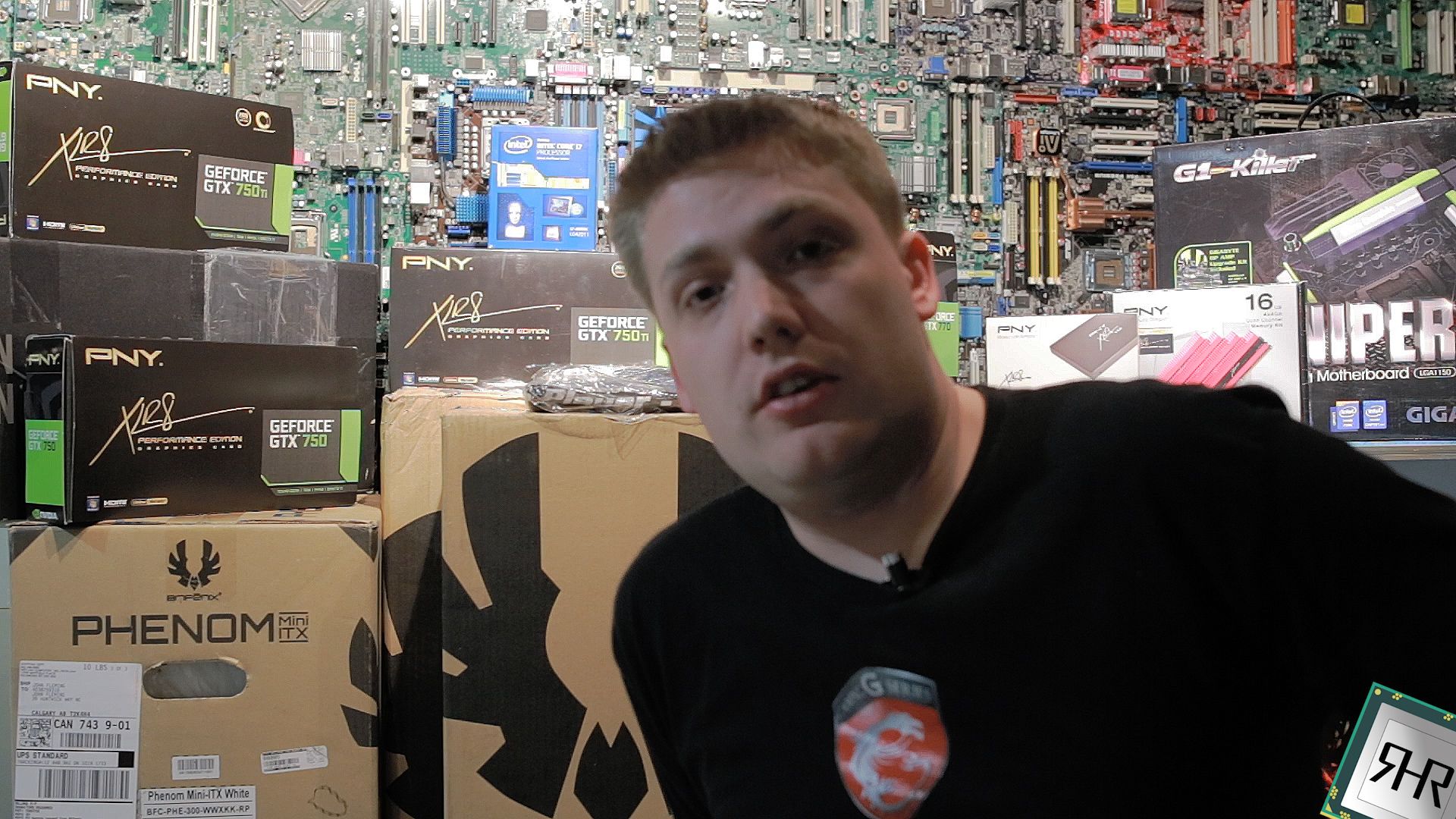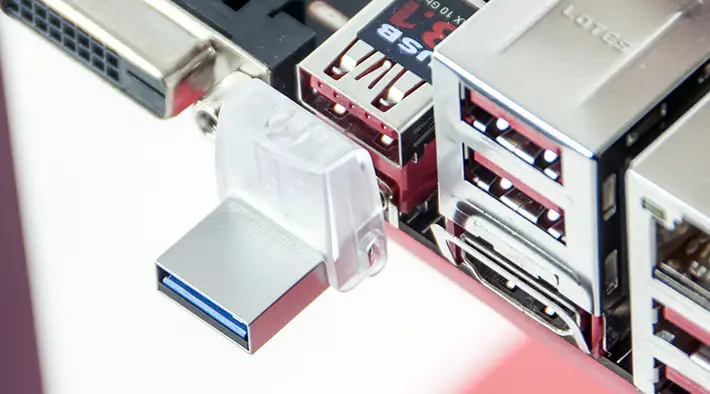![]()
Like some, but not many, Silicon Power has opted for a more… ‘external storage solution’ style shipping container for the XS70 series, rather than the more typical cardboard box with internal clamshell box. What this means is that some may be confused to exactly what the XS70 is on just looking at the ‘box’. Yes, thanks to the plastic clamshell, the XS70 is on full display but unless you look carefully one could easily be forgiven for thinking it was… say… a fancy USB flash drive. This is not a Good Thing. Potential buyers should never have to think about what a device is before picking up the box and reading the specifications. Thankfully, the details on the surrounding cardboard sleeve make it crystal clear what the XS70 is and what it has to offer. One just has to first not overlook it on their hunt for a new internal storage device, then pick it up… and then read the details. That may be asking a bit too much from busy retailer buyers.
On the positive side, while there is no ‘internal’ protection configuration the XS70 is not a delicate device. The large and fully metal covering act as armor for the delicate M.2 drive housed inside it, and it is better at shrugging off everything from drops to stabs than most M.2 solid-state drives. As such we consider this shipping container to be… quirky. Quirky in a mostly good way but a few minor modifications, such as much larger font on the front, could turn it from ‘mostly good’ into an actually good package design.
![]()
Moving on. The XS70’s main claim to fame is the heat sink it comes equipped with. This in and of itself is not all that unusual… as the Phison E18 controller runs hot. So much so that early models, from basically all companies, that do not come with a factory installed heatsink now offer one as an optional upgrade. An ‘optional’ upgrade that most should take advantage of unless it is already installed in a 3rd party heatsink or actively cooled via case/motherboard/etc. fans… if owners actually want to harness all of their drive’s potential performance. No, what is interesting is the heatsink that Silicon Power has opted for.
![]()
At this time there are three, or four if you count M.2 Add In Cards, general categories/camps that M.2 heatsinks fall in to. The first are heat spreaders. Tiny, tiny heat spreaders consisting of a slab of metal a couple millimeters thick with various amount of artistic styling done as a nod to increasing surface area. Some include a secondary heat spreader for the other side of the M.2 PCB… but many do not as they are trying to keep as close to M.2 z-height restrictions (i.e. 1.5mm per side) as they can. As such they are usually only a viable option for single sided M.2 drives. Examples of this camp include the Sabrent Rocket 4 Plus series, and a whole host of Chinese based aftermarket M.2 cooling options. At the OEM/ODM level these heatsinks cost a couple bucks at the most for the ‘manufacturer’ to include. Make no mistake, this camp is an extremely popular option as it offers few installation headaches, but at the expense of lackluster cooling.
![]()
On the other end of the spectrum, you have Sabrent and their Q4, Gigabyte and their heat pipe to separate fin array Aorus Gen4, the Corsair MP600 PRO XT, Seagate FireCuda 530, and various aftermarket options such as the heatpipe based ACIDALIE option(s). These typically run in the 5 dollar range for manufacturers to use, and can run in the 20 to 40 (or more) dollar range for consumers wishing to add robust cooling to their nekkid M.2 (unless you go the Aliexpress slowboat route at which point they can be found for in the 10-20 range). All of these options take the “Z-height restrictions?! We don’t need no stinkin’ Z-height restrictions” approach to cooling. As such they offer cooling for days but headaches for weeks. On the positive side, they consist of a top and bottom portion that can actually cool double side M.2 drives rather well.
![]()
In between these extremes is the middle path approach. One where buyers get an actual heatsink but one that is… limited compared to monsters like what the Aorus Gen4 comes clad with. On the positive side they do have fin arrays of varying thickness. They do include a method of cooling both the top and bottom PCB. They do offer a 10-20 Celsius reduction in operating temperatures. Ironically enough, when purchased separately by consumers they also typically cost 10-20 dollars for a 1 to 1 ratio of cost vs. cooling (though at the OEM/ODM level it is more like a couple dollars at most option). They do all that while not increasing compatibility issues all that much compared to the thin heat spreader options. Examples of this include the Corsair MP600 CORE, the Corsair P5 Plus, the after-market Thermalright M.2 heatsink cooler… and a whole host of Chinese 3rd party options.
![]()
Silicon Power has opted for the, in our opinion optimal, middle path approach. One where the top chunk of ~5mm metal has numerous channels machined into it. Channels deep enough to be considered surface increasing heat fins. This chunk of machined alloy is then connected to the top of the XS70 via heat pads.
![]()
It is then secured in pace via screws to the, ~1mm thick, ‘U shaped’ bottom plate (connected to the PCB via heat tape) and basically creates a metal sandwich which fully surrounds the M.2 drive… yet without many worries over M.2 port incompatibility issues and very few z-height restrictions. For example, when installed in most M.2 ports near / ‘under’ PCIe slots buyers will have little to no problems with a GPU being installed “over” the SSD… as the PCIe slot height is 11.1mm and a M.2 card sits at about 7mm off the motherboard, meaning the XS70s heatsink only intrudes ~1mm(ish) into the PCIe card area.
![]()
In testing, yes, this cooler works rather well. You can expect to see noticeably lowered temperatures under normal operating conditions. The caveat is your case must have good internal air flow. If not, it still will lower temperatures but nowhere near as good over extended usage as it ‘should’. With all that said, and as the old saying goes, there is no replacement for displacement. If it comes down to using an actively cooled M.2 port on your motherboard, an actively cooled M.2 heatsink, a M.2 to PCIe adapter card with integrated heatsinks and blower fan (e.g. Asus Hyper M2, Gigabyte Aorus Gen 4 AIC, etc.), or a passively cooled heatsink equipped M.2 SSD in a secondary M.2 port… pick the active cooling option for your hardest worked drive(s) and use the XS70 for secondary usage. It will run cooler than average E18s but will run hotter than actively cooled ‘nude’ E18 drives.
None of this should come as a surprise to knowledgeable M.2 enthusiasts. This heatsink is the same that many other companies offer… as they all are using the same Chinese OEM/ODM supplier. Just with slightly different (and removeable) fascia coverings over part of the heat sink. To be precise you can pick up this heatsink up on Aliexpress for 5 – 10 bucks (look for JEYI, Jonsbo, Rocketek, R2LB, etc. etc.). The only issue we have with this heatsink design is the fact that for the same (or less) cost buyers can buy either heat-pipe enhanced (‘Snowman Heat Pipe M2’), copper finned (‘Jeyi Q80’), or even actively cooled versions (‘Jeyi Cooling Warship’) which actually cool better than the aluminum only versions.
![]()
Moving on. The actual NVMe 1.4 solid state drive hidden underneath all that metal cooling goodness is a Phison E18 ‘reference’ M.2 2280 drive. This means it uses the excellent tri/penta-core ARM controller that is called the ‘E18’ in common parlance but is officially called the PS5018-E18 by Phison. This controller is an 8-channel, max 32CE, NVMe 1.4 compliant controller that is built on TSMC’s “12nm” manufacturing process. It boasts three major Arm Cortex R5 cores with two Phison ‘CoXprocessor 2’ secondary ARM cores. The latter are considered by Phison as a modern take on ‘co-processors’ (think Intel math co-processors from the 8086/286/286 days) and not ‘true’ cores. What this means is these ‘little’ ARM based cores are dedicated towards housecleaning/ECC/etc. type low-level duties leaving the three main ‘big’ cores to handle IO duties. By modern standards the E18 is a beast and has quickly become the de-facto PCIe 4 NVMe controller nearly everyone uses in their NVME 1.4 series.
![]()
Since it is a reference E18 1TB design that powerful controller is backstopped by one 1GB/8Gbit SKHynix SK hynix DDR4 (H5AN8G6NCJ, DDR4-2666) RAM IC… and uses Micron’s paradigm shifting 176-layer 3D TLC “B47R” FortisFlash NAND ICs (IA7BG94AYA).
![]()
Since it is a single sided model, this means four 256GB/1Gbit NAND ICs spread over the entire length of the 20x80mm PCB.
Like many Silicon Power has dialed back the… overly aggressive Phison E18 reference firmware’s performance of 7,4000/7000 (r/w) to 7300/6800. They have done so as the true E18 reference models run extremely hot and thermally limit at the drop of the hat. Even when paired with a heatsink they still can trip their built-in limiters when heavily pushed. This is because while the E18 controller is rated for 125 Celsius… NAND is not. At above ~70 Celsius the controller will start to throttle NAND performance – and as the temperature increases overall performance decreases. Once again, it is the NAND and not the controller that is the weak link from a temperature resistance point of view. A weakness Phison did not care about when showcasing their fancy new controller… but buyers should care about. Thus, the reason for newer models like the XS70 being released on to the market.
Overall, we can find little to fault with the XS70 series from a hardware point of view. Silicon Power has indeed paired a known good NVMe 1.4 design with a known good heatsink. The fact that they have been able to do so and offer it for less than most others offering the exact same thing just underscores Silicon Power’s ongoing commitment to value. Color us impressed.








